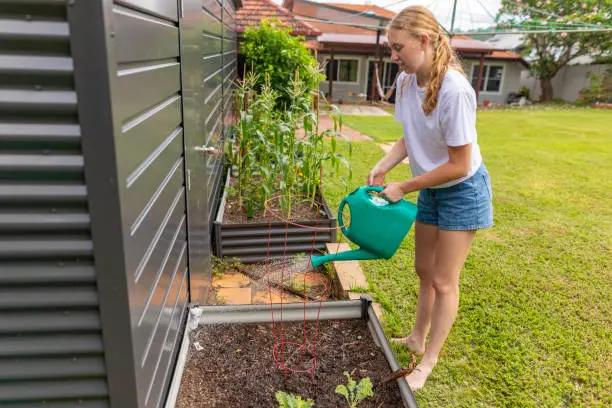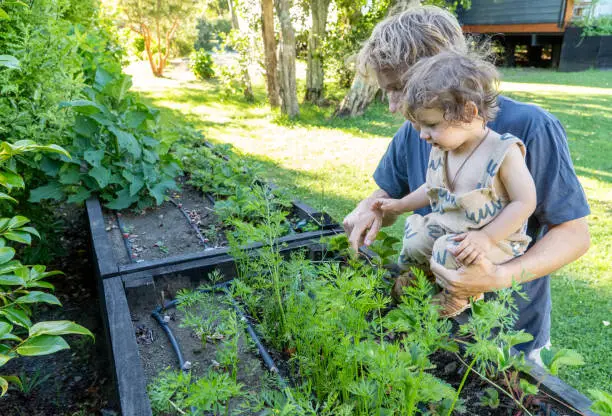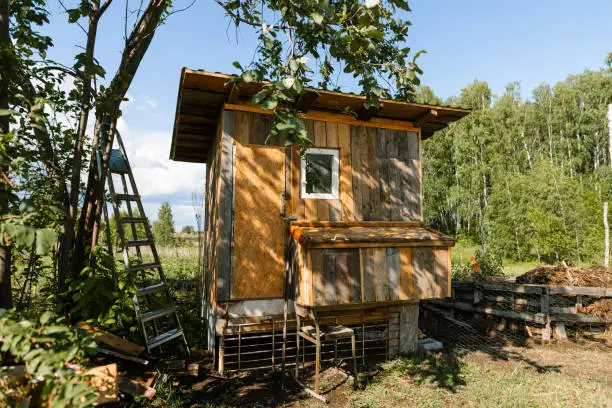Imagine entering your property with the morning sun kissing your lush greens and delicious tomatoes. You’ve grown these plants from seeds to bumper harvests. Imagine making money from that reward. Selling backyard homesteading farmed vegetables is as fulfilling as eating a fresh apple.
Let’s start with what you’re growing. Diversity matters. Try something other than tomatoes and cucumbers! Mint and basil are always popular. Kale, Swiss chard, and heritage veggies are also valuable. Have you grown tasty flowers? They’re gorgeous and trendy in gourmet cooking.
How do you begin? First, understand local laws. Though tedious, it’s essential. Check local produce sales permissions and licenses. Sometimes, filling out a form is enough; sometimes, your garden needs examination.
Next, presentation matters! Eating begins visually. Use burlap baskets or little wooden boxes for rustic charm. Organic sells better when customers know what they’re receiving.
If you grow organically, brag! Consumers like pesticide-free food. To use “organic” legitimately, you’ll require certification, a process worth considering.
Price carefully—too much and you’ll lose customers; too low and you shortchange yourself. Check local farmers’ markets for similar prices. Remember that quality and freshness cost more.

Okay, then! Discuss where to sell your goods:
1. Farmers’ Markets: Fresh vegetable lovers’ gold mines.
2. Local Restaurants: Chefs want fresh ingredients.
3. Community Supported Agriculture (CSA): Weekly vegetable boxes.
4. Online Marketplaces: Etsy and Facebook Marketplace are helpful.
5. Roadside Stands: Simple but efficient for high-traffic areas.
Use Instagram and Facebook to document your garden’s growth from seedling to harvest.
Remember my beginning story? Share yours! Stories engage people—they want to know who farms their food and how.
Store veggies because nothing spoils hard labor faster than rotten veggies! Invest in refrigeration or learn pickling and drying to increase value and extend shelf life.
Many people ignore community building—join gardening organizations or online forums to share tips and swap seeds!
Funny placards on your stand (“Lettuce turnip the beet!”) can help. Share odd social media updates (“Our carrots grew legs overnight…come see them dance!”)
Sustainability is also essential: composting scraps minimizes waste and improves soil for future crops.
Consider hosting workshops. Teach others how to start backyard gardens to build rapport and get money!
Neem oil kills aphids, and ladybugs eat pests faster than kids eating sweets.
Don’t worry about perfection—every gardener suffers setbacks from weather or hungry animals. You’ll learn as much from mistakes as from achievements!
Crafting Your Backyard Homestead: Creation to Market
Imagine entering your backyard to see and hear nature. Birds singing, leaves rustling, and a gentle breeze delivering flower aroma. Your backyard—your homestead—is complete with promise and imagination. Learn how to transform that promise into a successful craft business.
Crafting Begins at Home
Crafting doesn’t require a fancy studio or expensive materials. Hunt around—your farmhouse has plenty of resources. Dried flowers create lovely wreaths, and fallen branches form rustic photo frames. Have extra wool from your sheep? Try felting! Seeing everyday stuff artistically is crucial.
Consider my friend Sarah. Her garden herbs were used to make soap. A pastime became a tiny company. She experimented with scents and textures while drinking chamomile tea from her herb patch in the evenings.

The Art of Storytelling
Every craft has a narrative, and people love tales. Selling your crafts is like selling a piece of your life. Tell others about your lavender-gathering morning or pottery-glazing late-night sessions.
Imagine old Mr. Thompson down the street carving wooden toys for his grandchildren. Each toy has old-time tales—woods adventures, creek fishing—that offer value beyond the wood.
Mastering Your Craft
It’s essential to use what you have and improve your skills. Attend workshops or watch online tutorials to gain new skills. Practice makes perfect—or pretty good!
Remember Jenny? TV reruns bored her, so she knit scarves on long winter nights. She now creates elaborate patterns influenced by classic designs with a modern touch.
Building Your Brand
Big companies and little craftspeople need branding! Your logo should be simple and distinctive to reflect your style and beliefs.
Consider Mary, who bakes pies using family recipes. Her label? “Granny’s Goodies.” It’s a simple name but nostalgic and pleasant.
Marketing Magic
Now comes the fun—delivering those crafts to expectant hands! Instagram is great for visual artists since it lets you present your work beautifully.
Post images of your products and short stories or anecdotes about them, like how you unexpectedly found mint goes good in lemon soap after dropping some in there!
Genuinely interact with followers, respond to comments, and ask questions to foster community spirit.
Local fairs and markets
Local markets are great for getting recognized in your town and making sales without shipping!
Create a welcoming kiosk with nicely displayed merchandise so people may browse without feeling overwhelmed or bored.
Tom sold birdhouses fashioned from local recycled materials at our town fair last summer—talk about eco-friendly innovation and creativity!
Also, online presence matters.
An online store allows anyone to shop 24/7, regardless of location. Etsy makes starting a shop easy, even if tech isn’t your thing.
Upload clear images from every angle and full descriptions of each product’s unique features/benefits to develop confidence and ensure delivery satisfaction. Cutting returns/refunds is a win-win for everyone, right?
Regular updates keep content fresh and engaging, driving traffic to the site, boosting visibility rankings in search engines organically over time, naturally increasing sales, and achieving desired goals efficiently and seamlessly. Yay, team effort, go us, woohoo!
Explore the lovely world of backyard homesteading. Your lush greenery and blooming flowers are goldmines. Try to market standout vegetables and herbs. Think beyond the basics—heirloom types and edible blossoms can attract informed customers and gourmet chefs.
Local laws are cumbersome but are the first step to legal sales. After clarifying, make your produce attractive. Quality is evident in rustic baskets, beautiful crates, and clear labeling. Show off your organic gardening! Certification is difficult yet worthwhile.
Check local farmers’ markets for the best price. Quality and freshness cost more, so take your time. Now, sell where? Local restaurants, CSAs, and farmers’ markets are goldmines. Online markets and roadside stands are great, too. Social media is your best friend—take followers from seed to harvest.




Leave a Reply
You must be logged in to post a comment.